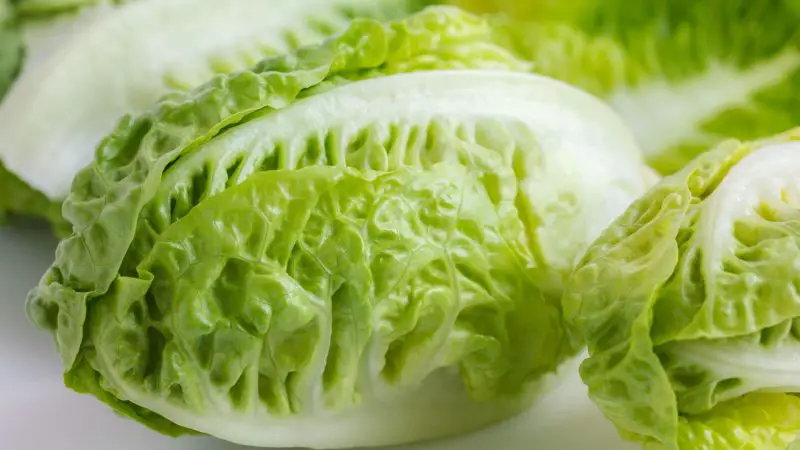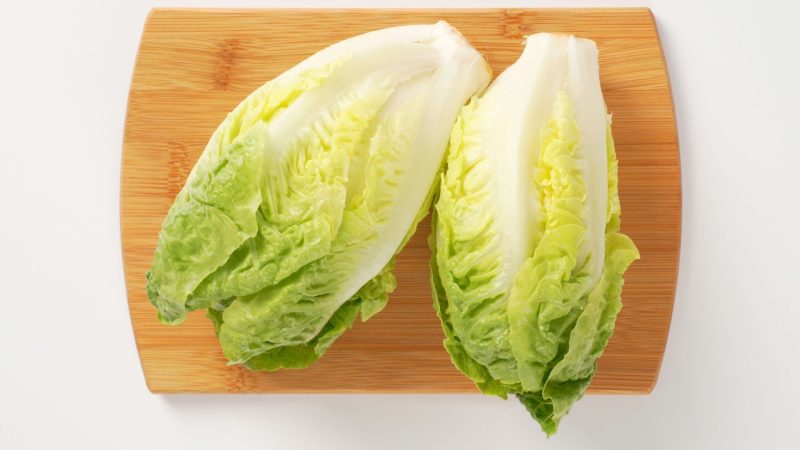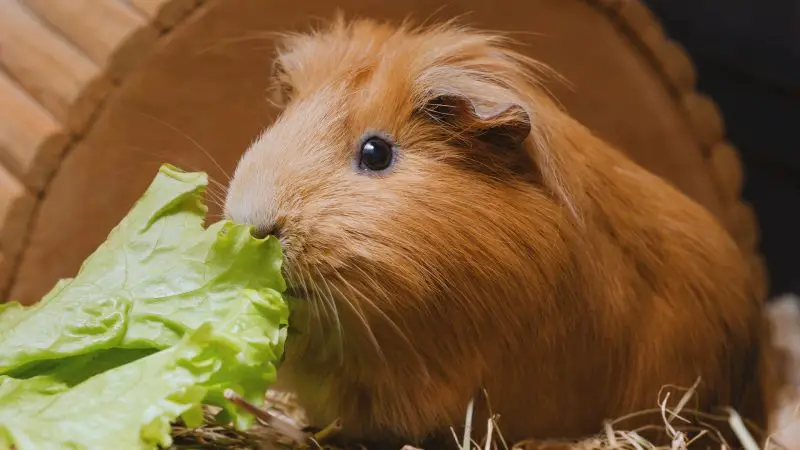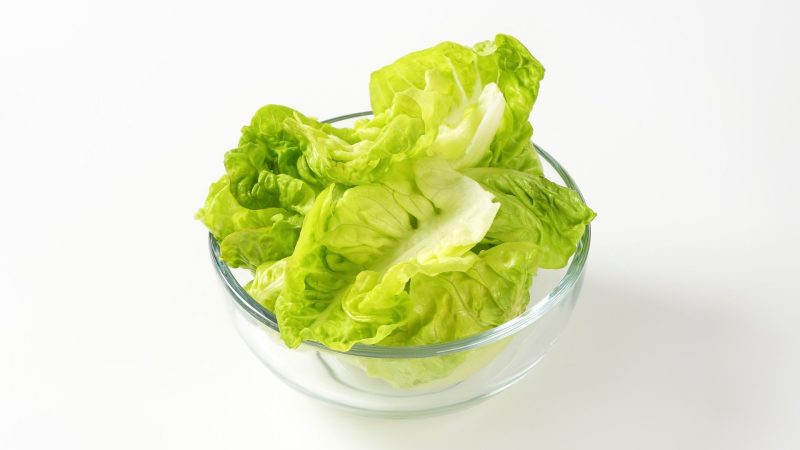The little gem lettuce is a smaller version of romaine lettuce, and it is usually used in various salads. People enjoy having little gem lettuce in their meals due to its sweet and buttery taste, knowing it’s also nutritious.
But would guinea pigs enjoy eating this too? Is it even safe for them? Just like any other new food, you have to do a little research before including it in your guinea pigs’ diet.
Can guinea pigs eat little gem lettuce? Guinea pigs can eat little gem lettuce. Feed them with a handful amount, a few times per week. Little gem lettuce should be given in moderation to avoid high calcium consumption.
In this article, you will learn if this little veggie is good for your pet, some of its health benefits, nutrition facts, risks, serving size and frequency, and some quick facts!
Table of Content
Is Little Gem Lettuce Good for Guinea Pigs? | Health Benefits

Little gem lettuce is good for guinea pigs. It has nutrients needed by their bodies. This type of lettuce is safe as long as it is served in moderation.
Here are some of the health benefits from little gem lettuce:
Healthy Weight
This lettuce is not very caloric, and it isn’t a fattening type of food. So, if the cavy eats this often, don’t be worried about your guinea pig’s weight.
Cardiovascular Health
Little gem lettuce is low in fat. This is good because fatty food is known to be harmful to the cardiovascular system. The blood vessels can be clogged when too much fat is consumed, so reducing the fat keeps the heart and blood vessels healthy.
Strong and Relieved Muscles
Because there is potassium in this lettuce, the guinea pig will get enough potassium for the daily needs. This mineral relieves aching body muscles and strengthens the heart muscles too.
Energy
Little gem lettuce is a good plant source of carbs and proteins, which warm up the body and give it energy.
Scurvy Prevention
The best part about little gem lettuce is that it has vitamin C. Vitamin C deficiency can result in scurvy. When they have enough vitamin C, they will have a normal appetite, healthy weight, shiny fur, and there will be no signs of fatigue or diseases.
Antioxidants
Little gem lettuce also has vitamin A, which is an antioxidant. This vitamin forms strong bone tissues and keeps the immunity in great health.
Nutrition Facts of Little Gem Lettuce

In a serving of 100 g (3 oz) little gem lettuce, here are some of its nutrients:
- Low in Calories – 16 calories. Which means it is a light meal that won’t make your guinea pig chubby.
- Low in Fat – 0.6 g of fat. The excess of fat damages the cardiovascular system and also causes obesity.
- Potassium – 247 mg per serving. The potassium relieves the muscles and keeps the heart muscles in great shape too.
- Vitamin C – 6.3 mg vitamin C. The cavies need vitamin C because they can’t make it naturally and store it in the body. But, more importantly, they need vitamin C because without it, they can get scurvy.
- Vitamin A – 174% of vitamin A. This vitamin helps with the formation of bones and teeth. Also, it creates soft tissues and white blood cells. Vitamin A is a strong antioxidant that keeps good overall immunity. This antioxidant also protects from free radical damage that causes premature aging and diseases.
Risks to Consider When Feeding Little Gem Lettuce to Guinea Pigs

Urinary Stones and Infections
Little gem lettuce has 30 mg of calcium. This mineral is very important for bone formation, but guinea pigs cannot consume it in large amounts.
Excess calcium in the guinea pig’s body will pile up as a mineral deposit in the urinary tract. So, the guinea pig could risk getting kidney or bladder stones.
You need to consult the veterinarian about resolving this problem because it can be fatal if this is not cured. The symptoms will appear in the urinary tract, including painful urination, frequent urinary infections, blood in the urine, and if uncured, the final stage is renal failure.
Serving Size, and Frequency of Little Gem Lettuce for Guinea Pigs

How Often Can Guinea Pigs Eat Little Gem Lettuce?
This lettuce contains some calcium, so it is not recommended to feed your guinea pigs daily and in large amounts. If you want your guinea pig to eat this daily, then serve this lettuce in minimal amounts. Otherwise, a handful is a normal serving, but just a few times per week.
Remember that the guinea pig needs a balanced diet, so you should also consider switching between salads. Always have a good variety of veggies available to mix up the diet routine of your pet.
What Other Lettuce Types Can Guinea Pigs Eat?
It is good that there are varieties of lettuce that you can include in your guinea pigs’ diet. Some are arugula, beet tops, kale, chard, radicchio, cilantro, red leaf lettuce, butterhead, green leaf, or romaine lettuce.
On the other hand, some lettuce types, like iceberg lettuce, are hazardous to feed your guinea pig. It has just water, no more than a few nutrients, and can cause diarrhea or other health problems.
Quick Facts on Little Gem Lettuce
- This lettuce has a crisp and crunchy texture, and the aroma is sweet.
- Little gem lettuce is like a mini-version of the romaine lettuce; it is half the size of romaine, 5 inches in length, 3 inches in width on average.
- The peak season is during spring, but you can find this lettuce in markets all year round. Its blooms are best from March to October.
- Little gem lettuce was a combination of romaine lettuce and butterhead lettuce.
- Another name for the little gem is ‘sucrine’ (this means ‘sugar’ in French).
- The darker this lettuce is, the more nutrients it has.
- Lettuce was first cultivated by the Egyptians back in ancient times.
- More lettuce varieties grew in Holland between the 16th and 19th centuries.
We have also made a full list of foods that guinea pigs can and can’t eat (150+ Types of Foods). Be sure to also check our recommended products page for everything you will ever need to assure a happy life for your guinea pigs. Hope this information was helpful and you have found the answer you were looking for.
List of Sources
Mini Head Lettuces Offer Gardeners Delicious, Affordable Salad Options
